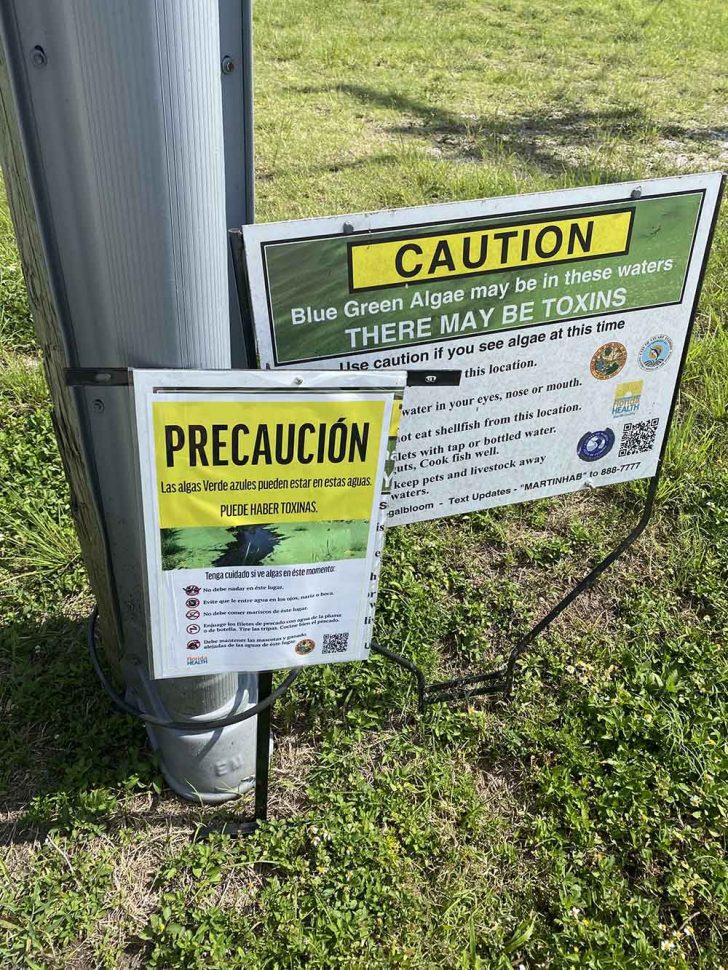Indian RiverKeeper: Feb. 2022 Update
The more-than-decade-long downward slide of the Indian River Lagoon continued in 2021 and as we surge ahead in 2022, it is readily known that real fixes take legislation and measures that “hurt a little” and take some real sacrifice on the part of individuals and businesses who have negatively impacted public waters.

Bad Bill Looms
Legislative session is in full swing, and Indian Riverkeeper is watching a few bills, both bad and good. One bad bill in particular is House Bill 349. It is a so-called “seagrass mitigation bill” which in practice further opens the door to more seagrass decline in the Indian River Lagoon. If passed into law, it gives coastal developers a big fat hall pass to continue doing business as usual, seagrass be damned. HB 349 has already passed in the House by a 13-4 vote.
The principle behind mitigation “banking” isn’t new. Developers have long leaned on it when time comes to destroy wetlands to put up buildings, roads, etc. And if you did into realize it, polluters in this country can buy “carbon credits” to offset their emissions.
So, at this critical time, with the death of aquatic plants at the center of this year’s record manatee die-off, legislators, in their zeal to please developers who support them, support this House bill that would allow coastal developers whose projects would have “unavoidable impacts” on what little seagrass we have left, destruction to buy credits and fund “replacement” seagrass restoration elsewhere.
Someone has lost their mind in Tallahassee. Someone hopes that this development-friendly plum slides by the public without notice.
Because the bill doesn’t address enforcement or a crackdown on nutrient pollution plaguing the Indian River Lagoon, it was thankfully met with criticism during an early December House Environment, Agriculture and Flooding Subcommittee hearing.
Environmental groups point out that the bill is overly broad. It does nothing to address causes of seagrass decline, such as dirty water. It simply and blatantly allows for additional impacts to existing seagrasses.
The very language says it will mitigate. It will allow for further destruction of seagrass by way of shoreline building and docks, and more. In the end, it will benefit private individuals or businesses, not the Indian River Lagoon at a time of unprecedented crisis.
Treasure Coast Rep. Toby Overdorf co-sponsored the bill. Indian Riverkeeper has informally voiced our opposition and will soon officially petition it.

Blue Green Algae Task Force
Senator Linda Stewart of Orlando has filed Senate Bill 832 for upcoming session that would make some of Florida’s blue green algae task force’s recommendations enforceable by law.
The bill, if passed, would require periodic inspections of sewage treatment and disposal systems and put the responsibility on the shoulders of the Florida Department of Environmental Protection.
And there is no argument that sewage is the smoking gun in the demise of much of the Indian River Lagoon.
The bill also would require new or updated Basin Management Action Plans (BMAPs) to identify and prioritize certain projects. There is data proving that this state program, meant to reduce nutrient inputs, is ineffective in particularly water basins, and especially for Lake Okeechobee, where much of the nutrient load originates from lands north of the Lake. Fellow Florida Waterkeeper Jen Lomberk (Matanzas Riverkeeper) attended a recent Task Force public meeting, saying, “I do take issue with this false narrative that all of your recommendations are being carried out to the T because that simply is not the case.”
What must be understood is that there is a wide range of performance levels between basins, when it comes to runoff. It must be noted also that much of the nutrient loading in the IRL north of St. Lucie County is largely urban, stormwater, ground water, septic seepage, and sewage spills, not industrial agriculture. In Martin County, waters definitely added impairment from Lake Okeechobee discharges (agricultural runoff) to the St. Lucie River and southernmost IRL. In short, only bills that put laws on the books can put real teeth in the Florida BMAPs that are key to reversing the decline of the waterways.
Sand Spike Shootout Looms
The Indian Riverkeeper second annual Sand Spike Shootout is slated for Feb. 26-27 and surf anglers can vie for eight major place prizes for four top pompano and four top whiting, determined by weight.
Entry for the two-day event is $40, which includes a raffle ticket and pack of FISHGUM; your optional $60 entry includes your annual membership to Indian Riverkeeper, raffle ticket, pack of FISHGUM, and a special surf terminal tackle pack.
To enter, visit www.theindianriverkeeper.org and tap the “Sand Spike Shootout Registration” button on the homepage. For more information, call (772) 521-1882.




